| |
a = 0 (no central hole) |
a = 0.5, no star |
a = 0.5, with (M/2) star |
| static |
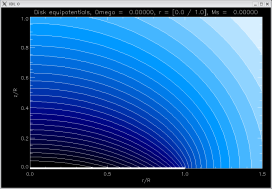
[ -2.0000, -1.86843, -1.27323 ]
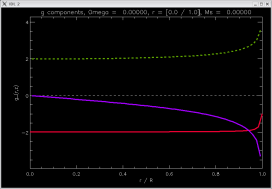
|
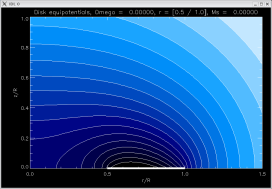
[ -1.23181, -1.32279, -1.0145 ]
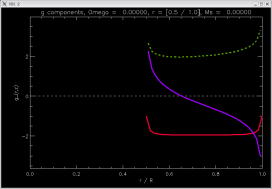
|
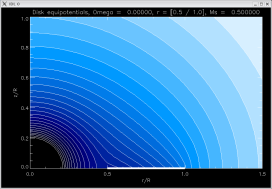
[ -2.23181, -1.98946, -1.5145 ]
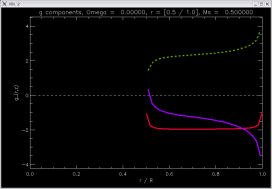
|
| - | |
| rotating |
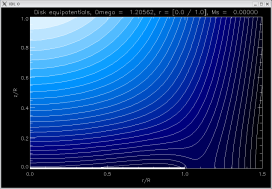
[ -2.0000, -2.05012, -2.0000 ]
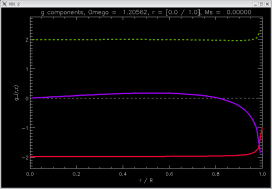
|
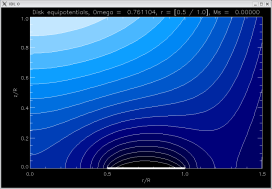
[-1.30422, -1.48571, -1.30422 ]
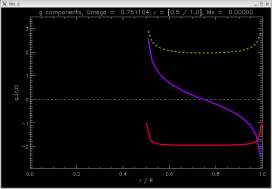
|
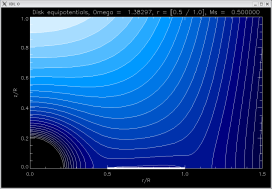
[ -2.47088, -2.52738, -2.47088 ]
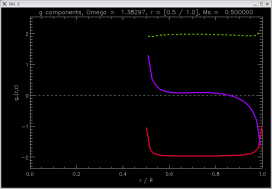
|
| - | |
radially
piecewise
constant |
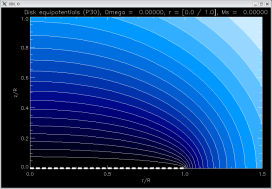
[-1.57997, -1.57998, -1.48009]
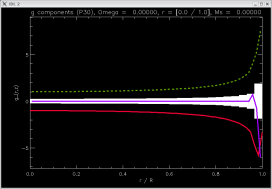
|
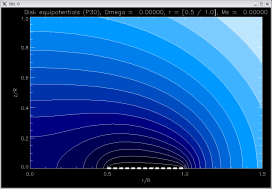
[-1.15896, -1.24314, -1.06472 ]
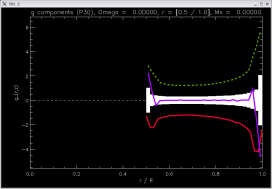
|
Cannot have constant potential over the entire disk in the
presence of a central point mass (or any other mass
inside the ring, for that matter).
|
| - | |
radially
piecewise
linear |
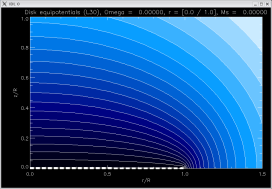
[-1.56053, -1.56053, -1.56053]
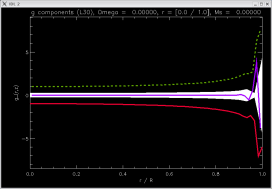
|
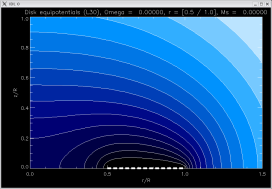
[-1.19618, -1.19618, -1.19618]
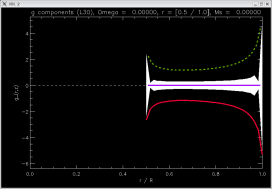
|
Same as above...
|